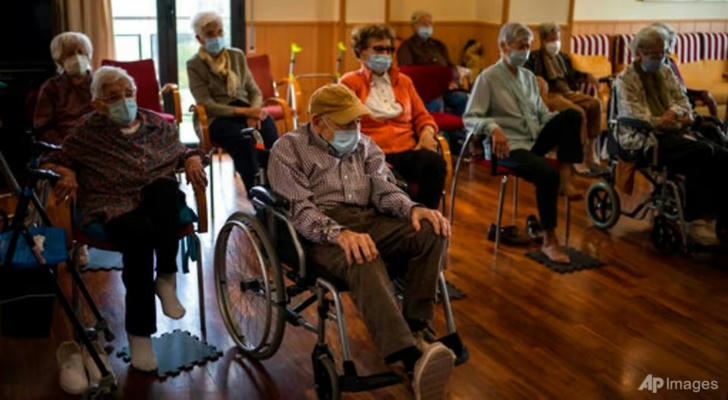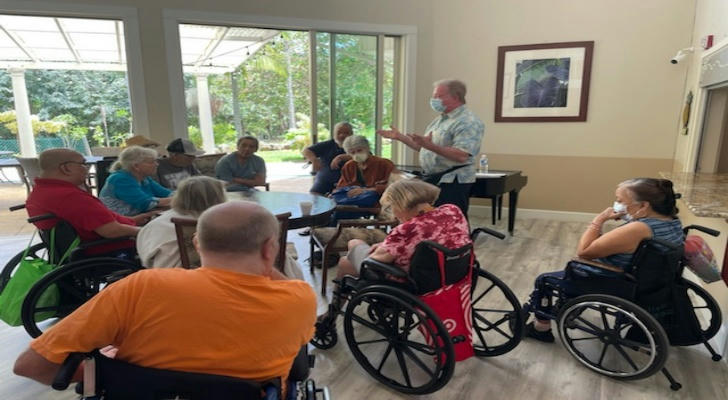Elder Care in the United States: Challenges and Opportunities
With the rapid aging of the population in the United States, elder care has emerged as an important social issue that cannot be ignored. According to data from the U.S. Census Bureau, it is estimated that by 2030, one in five Americans will be age 65 or older. As this demographic grows, the elder care industry in the United States faces numerous challenges and opportunities. This article will explore the current state of elder care in the U.S., the challenges it faces, case studies, and future opportunities and development directions.

Current State of Elder Care in the United States
• Home Care: Home care services are typically delivered by caregivers within the elderly person's home, assisting them with daily activities such as bathing, dressing, dining, and providing medical assistance like medication management and physical therapy.
• Nursing Home Care: Nursing homes offer round-the-clock medical care and living support. Many choose to enter nursing homes in their later years, particularly when continuous monitoring or medical care is required.
• Assisted Living Facilities: These offer a living environment where elders can maintain relative independence while receiving care support, catering to their everyday needs.
Challenges Faced
Shortage of Human Resources
A prominent challenge in the U.S. elder care system is the shortage of human resources. As the population ages and the industry expands rapidly, the demand for professional caregivers has increased swiftly. However, due to relatively low wages and high work intensity, the sector experiences high staff turnover and chronic shortages.
Cost and Financial Burden
The cost of elder care in the U.S. remains high, especially in specialized care institutions like nursing homes and assisted living facilities. This makes it difficult for many families to afford, and personal savings and retirement funds often fall short of covering these expenses.
Incomplete Protection and Regulation
Despite existing legislation such as the Older Americans Act, many gaps remain. These regulations sometimes fail to meet the rapidly changing industry demands and evolving needs of the elderly. Additionally, abuse and neglect of the elderly, although in decline, still occur in certain situations, which is concerning.

Case Analysis
Case Study: The Alden Family's Decision
In 2020, the Alden family faced typical issues while deciding how to care for their aging mother, Martha. Martha lived alone, but as her health began to decline, the Alden family decided to seek professional care services.
Initial Choice of Home Care
Initially, the family opted for home care, hoping Martha could continue living in a familiar environment. However, the monthly cost of $4,500 was financially straining. In addition, the service was insufficient, particularly the nighttime care, increasing the pressure on family members.
Transition to Assisted Living
Faced with the high cost of home care, the Alden family considered assisted living facilities. These provided a compromise, allowing Martha to retain some independence while receiving necessary care. Ultimately, they chose a facility close to the family and managed to alleviate some financial burden through a long-term care insurance plan.

Future Opportunities and Development Directions
1. Technological Development and Innovation
Technological innovations such as telemedicine, smart home devices, and health monitoring applications offer new solutions for elder care. These technologies can help improve caregiving efficiency, alleviate human resource pressures, and provide higher safety and convenience for the elderly.
2. Increased Government Support and Regulation
Strengthening government support and regulation of the elder care industry can be achieved through increased funding, encouraging the development of care insurance, and ensuring service quality. Additionally, government initiatives should promote policy reforms to attract and retain more professional caregivers.
3. Raising Public Awareness and Education
Enhancing public awareness of the need for elder care is another critical factor. Through community activities and educational programs, families can be helped to plan and save for care needs earlier, preparing them for future challenges.
Conclusion
In the future, with advancements in technology and improved policies, the U.S. elder care industry has the potential to make significant strides in cost control, service quality, and coverage. However, society must continue to address existing challenges to ensure that all elderly individuals can enjoy a life of dignity and care. Through the collaboration of individuals, families, communities, and the government, the future of elder care is filled with hope and opportunity.
